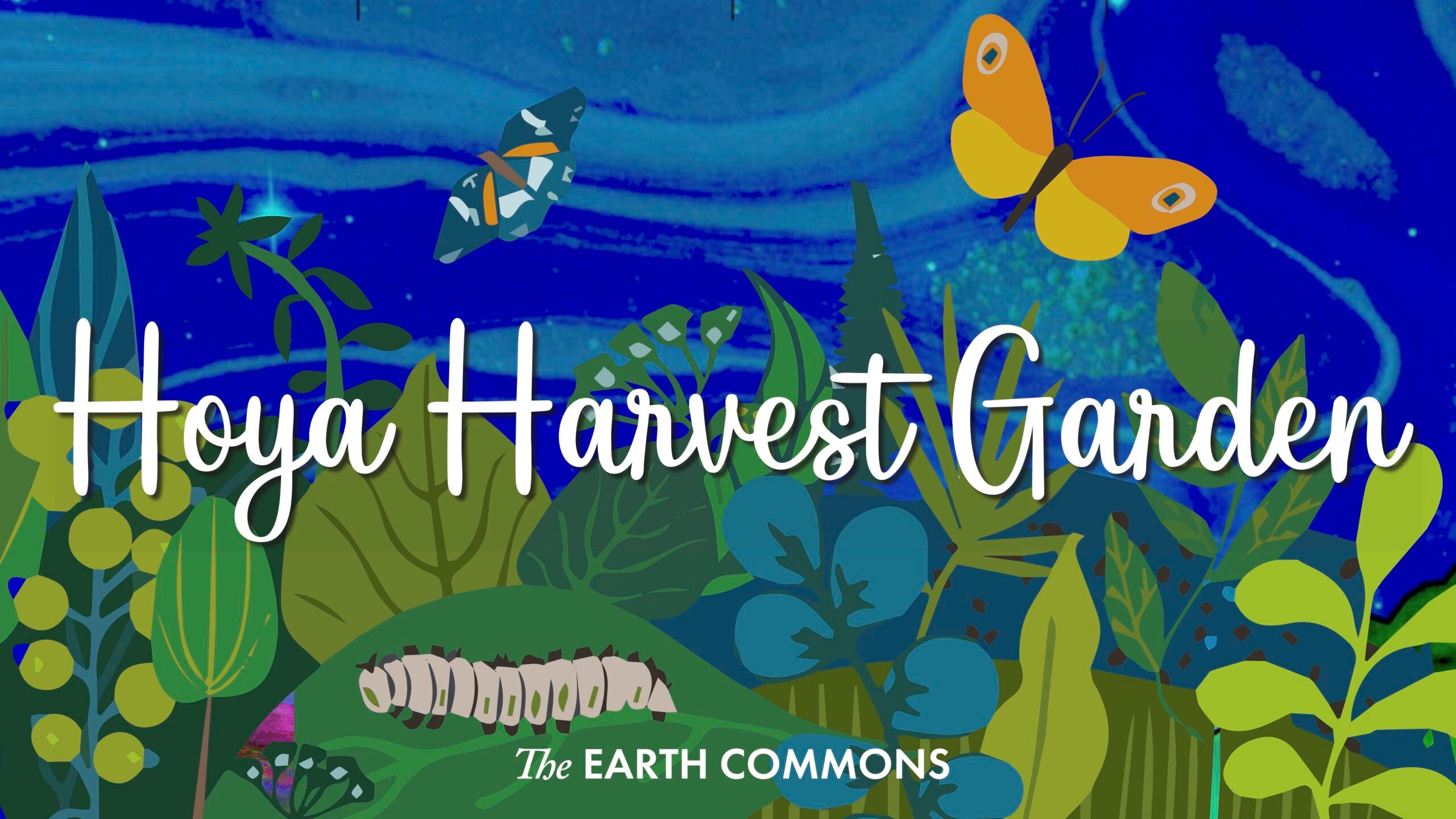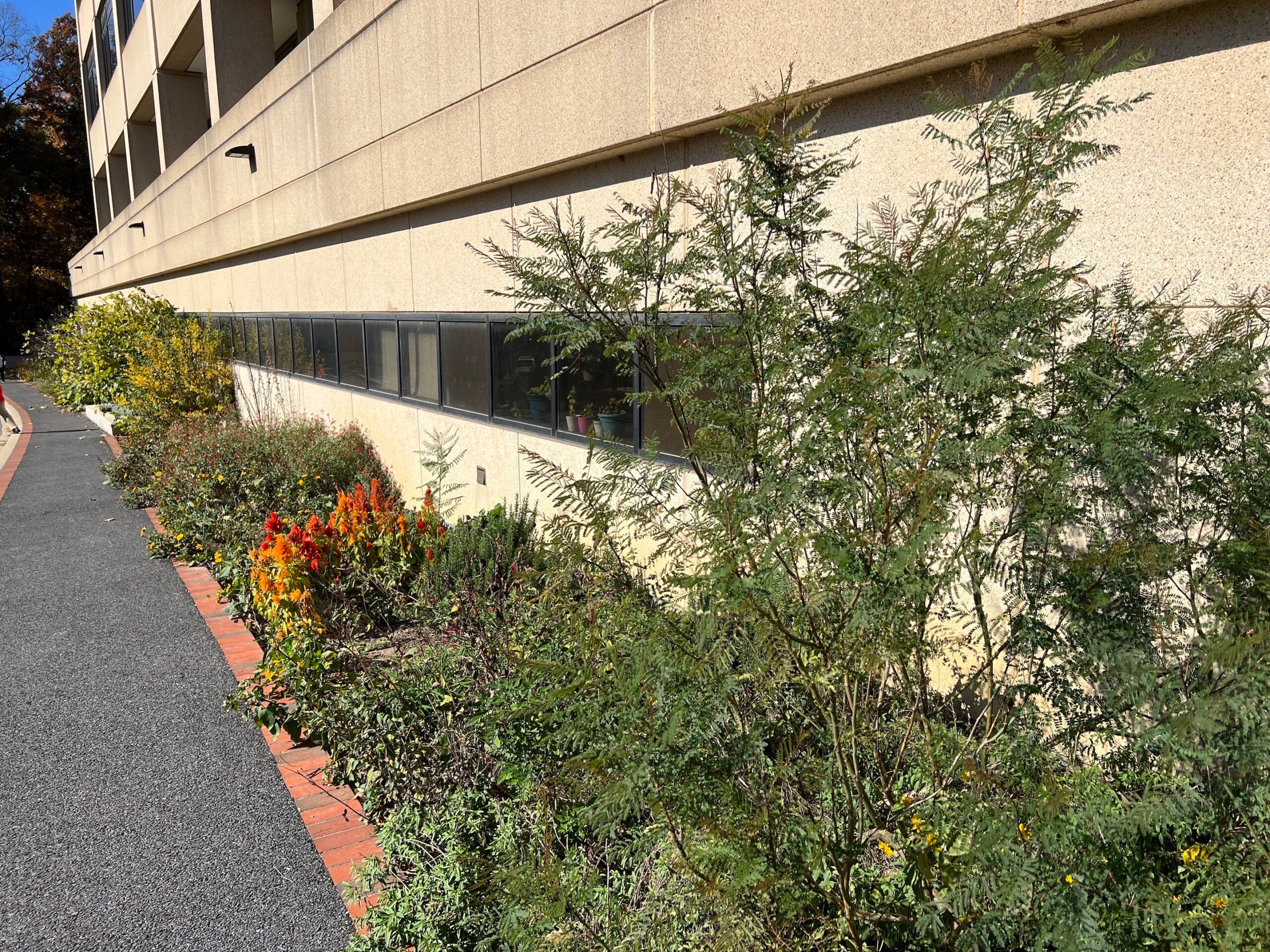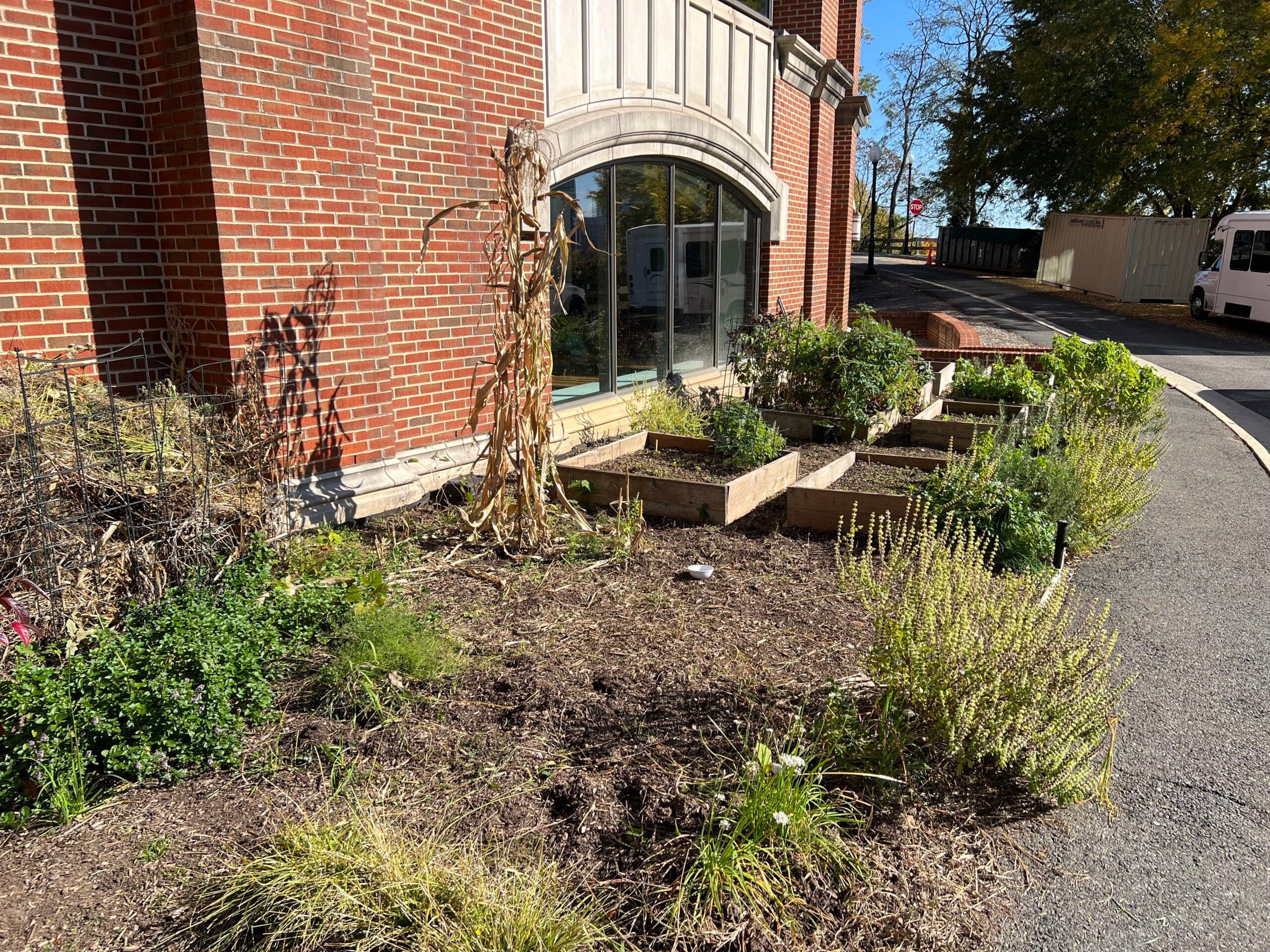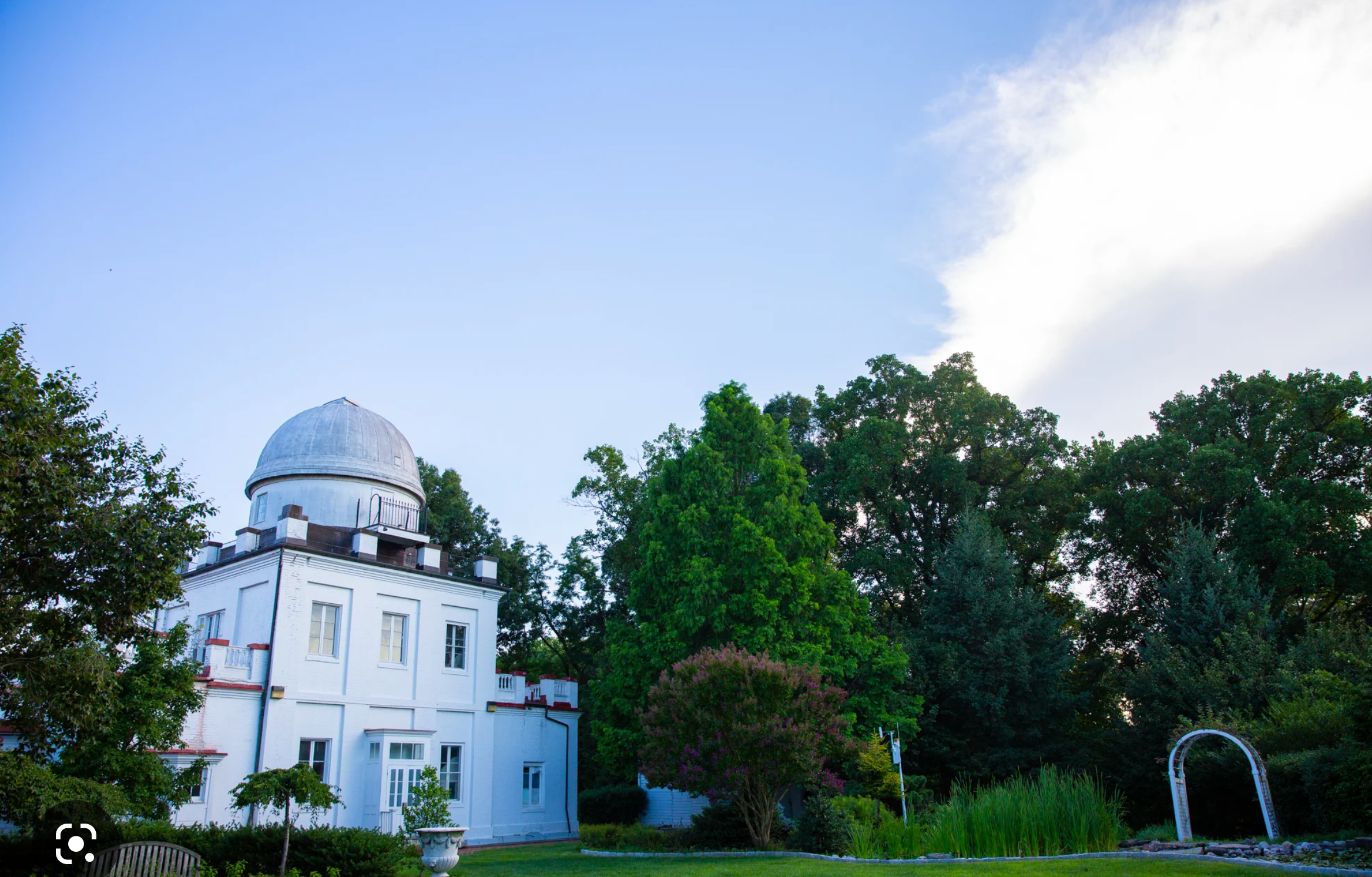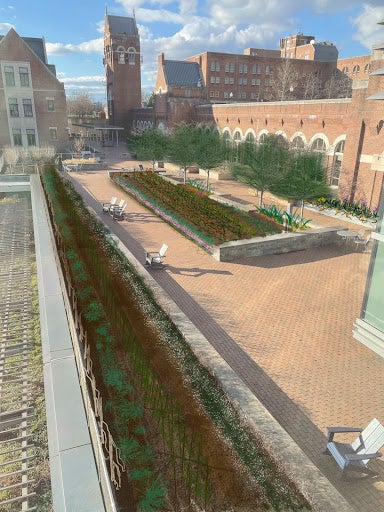Campus Gardens
The Georgetown area is naturally home to a diverse collection of flora and fauna, but like many urban landscapes, much of that has been lost to pavement and ornamental landscaping. Thanks to dedicated faculty, students and staff, there are several micro-landscapes on campus designed to reverse this trend. While all of the gardening initiatives around campus strive to increase the overall biodiversity of our landscape, no two gardens are alike and each has its own focus and philosophy. Find out more about the gardens of Georgetown and where to find them below!
ECo’s Hoya Harvest Garden
The Hoya Harvest Garden is part of an existing network of dedicated gardeners across Georgetown University’s campus.
Urban Herbs
The Desert Garden, Shade Garden, and Podium Garden are all part of the ‘Urban Herbs’ project, and are under the care of Dr. Adriane Fugh-Berman (Department of Pharmacology and Physiology) and Isa Karathanos (undergraduate), as well as several volunteers. These mixed plots demonstrate xericulture, permaculture, organic gardening, and ecological gardening concepts and include medicinal herbs, culinary herbs, wildflowers, perennial vegetables, fruits, and unusual decorative plants. The gardens are full of pollinators, birds, rabbits, and the occasional lizard. The first garden was started around 2010.
The Georgetown Community Garden
The Georgetown Community Garden is a student-run club focused on cultivating heirloom/heritage crops. Located on the south side of Leo O’Donovan Dining Hall students cultivate a small plot of land to sustainably produce food for our community and flowers for our local pollinators. The fruits and vegetables produced are enjoyed by undergraduates, given to the Hoya Hub (our student food pantry), or donated to DC-area food banks. Established in 2018, the Community Garden has grown over 20 plant varieties including corn, lavender, and potatoes. As a team within GREEN (the Georgetown Renewable Energy and Environmental Network), these students are dedicated to gardening, educating our community on sustainable agricultural practices, and partnering with other GREEN teams to promote a greener Georgetown.
Observatory Garden
Georgetown University’s Observatory Hill was once a forest, then a pasture, and finally part of GU’s Campus. The current Observatory Hill Gardens are the Cottage Garden on all sides of the Cottage, Irene Baker Butterfly Garden on the north side of the Ecology Lab; Rev. Francis J. Heyden, S.J., Garden (Heyden Garden) with two ponds on the north side of the Observatory; and the Xeric Garden on the south side of the Observatory. Since GU completed the Observatory in 1844, many people have worked on Observatory Hill Gardens, including the GU Landscaping Crew; Rev. James Curley, S.J.; Professor Donald M. Spoon; Professor Edward M. Barrows; and Professor Martha R. Weiss. Professor Spoon created and maintained an Iris-breeding garden from about 1972–1995. The Aldo Leopold Conservation Garden, created by and maintained by Professor Barrows, was on the east and north sides of the Observatory from1996–2022. A Jesuit created and maintained a Rose garden in the 1980s. The Observatory Hill Gardens have many native and non-native organisms, including herbaceous-plant, shrub and tree species from different parts of the world. The western base of Observatory Hill is a tiny patch of Eastern Deciduous Forest adjacent to Glover Archbold Park. This valuable patch has some pollinating-insect species rare or nonexistent on the rest of the Campus.
Teaching Garden
The Biology Teaching Garden, outside of the Biology laboratories on the 3rd floor of Regents Hall, is meant to showcase plants native to our region. You can find native honeysuckle vines, some cat tails, and tons of native wildflowers. It was recently replanted with a variety of fruiting vines and bushes as well.
Hoya Harvest Garden
The Hoya Harvest Garden, an Earth Common’s project, aims to create a sense of shared-responsibility around sustainable food systems by integrating farming spaces into the campus, generating food for the community, hands-on learning experiences, and dialogue around human impacts and food production. These gardens, cultivated by a team of ECo staff and student stewards, use a variety of ‘sustainable ag’ techniques including cover crops, minimal tillage, crop rotation, integrated pest management, and intercropping. The produce is distributed to the Hoya Hub and other partners both on and off campus. The space also serves as the first of many ‘Living Labs’ on campus, and is integrated into a variety of classes.
Learn MoreIndigenous Student’s Medicinal Garden
Coming Soon!
This garden is a collaboration between the Circle of Indigenous Students Alliance, Shelbi Nahwilet Meissner (Philosophy Department), Campus Ministry, and the Earth Commons. It provides a space for our indigenous students to cultivate and harvest plants of cultural, spiritual, and medicinal significance.
Red-Green House Garden
Coming Soon!
Map of Georgetown Gardens
Explore all of the gardens of Georgetown using this map!


